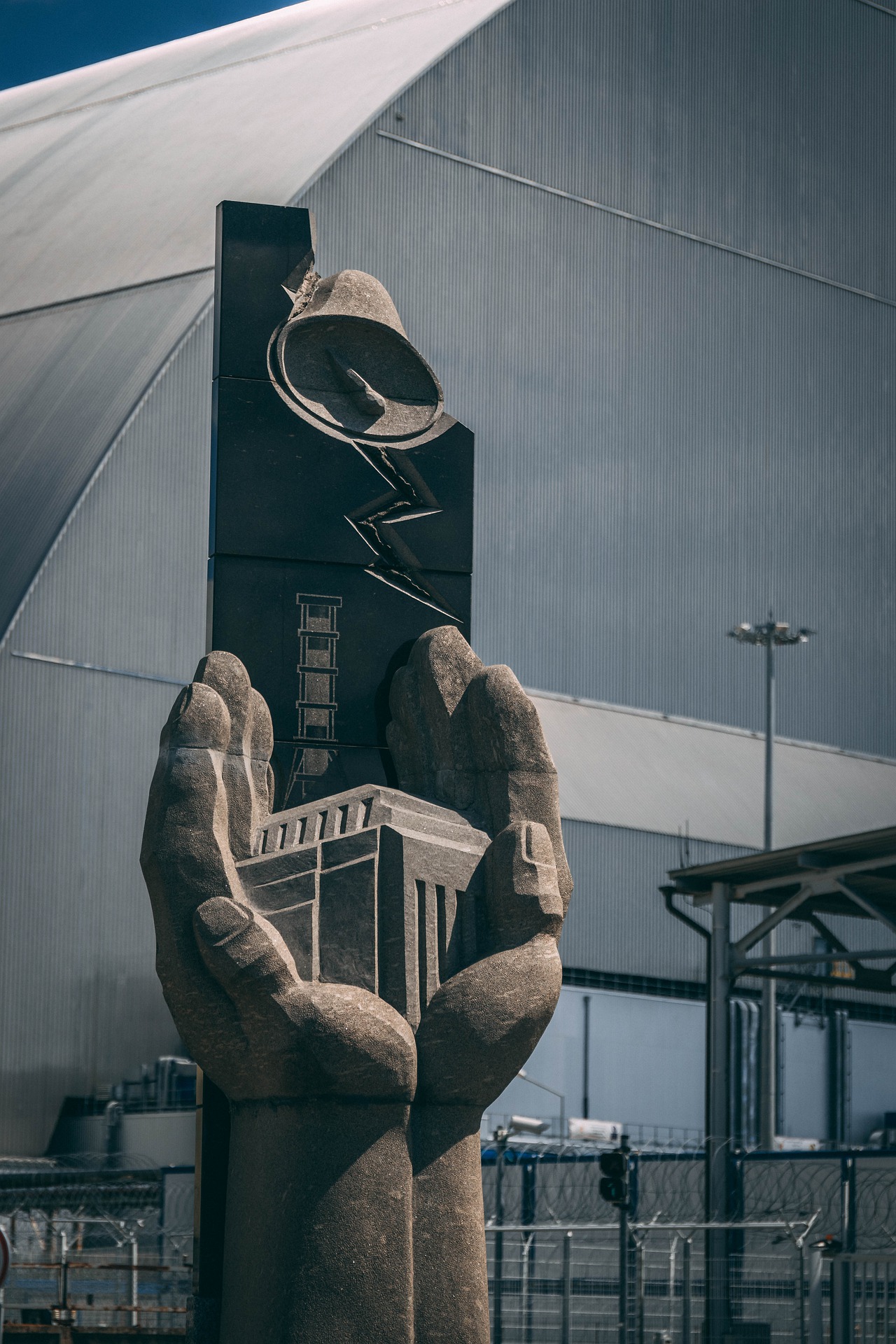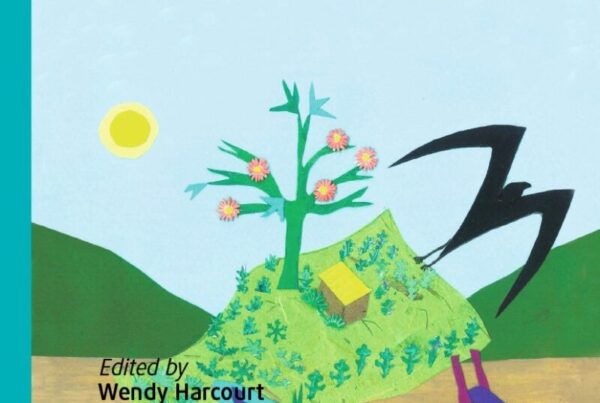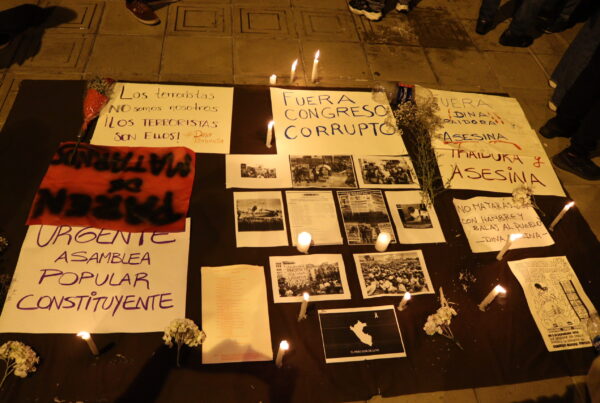By Achim Klüppelberg
In a global state of climate emergency, technocratic voices for nuclear renaissance to curb greenhouse gas emissions are becoming prominent. The current anniversaries of the disasters at Fukushima (10 years) and Chernobyl (35 years) demand a reflection.
Nuclear energy as a contributor for the mitigation of global warming is heavily discussed among environmentalists and nuclear experts. While it is clear that fossils need to be replaced by alternative energy sources, people divide around the question whether nuclear could be an option for the future.
A debate surfaced after the ecomodernist manifesto proposed a technocratic approach in 2015, supporting the benefits of technofixes in a world which would be split into culture and nature. Political ecologist Giorgos Kallis disagreed, arguing with Latour and Žižek for the inseparability of human society and nature. He also argued against large technological systems, since such systems would result in the division of society into consumers and experts – and who could then challenge the experts? For him, this could not be ideal, since “a society powered by nuclear energy [could not] be a society of equals or of mutual aid.”
In the meantime, Robbins and Moore did not see this strong divide and rather saw themselves mediating for common ground between ecomodernists and environmentalists. Five years later, their theories were put to the test, as nuclear historian Kate Brown has found herself in a very practical struggle, after publishing Manual for Survival.
She analysed Chernobyl’s negative health consequences in Belarus and Ukraine on the basis of declassified material in central and county archives, supplemented by oral history. Quickly she got attacked by nuclear experts, challenging her interpretation of source material with an alleged lack of knowledge about radioactivity. By turning towards flora and fauna, she was able to add so-to-speak living archives of radioactive contamination.

Liquidator’s memorial at Chernobyl NPP and second Sarcophagus in the background.
It was a struggle over discursive power on the question of how many died and fell ill because of radioactive fallout that could have been prevented. Because how could nuclear energy become an alternative option for future energetics, if accidents could be so severe, as Brown claimed?
In February 2021, earth hosted 443 operational civil nuclear reactors with a total net electrical capacity of 393 GWe [1]. 50 more were under construction [2]. It was only one reactor, featuring only 1 GWe, which due to its disintegration at Chernobyl in April 1986, introduced earth to its first disaster rated seven on the International Nuclear Event Scale (INES).
It was only one tank filled with several dozens of tons of liquid radioactive waste from the Mayak reprocessing facilities, which exploded in September 1957 and which was enough to contaminate vast stretches of land in the Urals, forcing 10,180 people to be evacuated and at least 22 villages to be abandoned, while being rated six on the INES [3].
A lesser-known accident happened at the very top of the Kola peninsula in the Russian North, at Andreev Bay, 60km away from the Norwegian border. There, a nuclear waste storage facility suffered a radwaste cooling pond leak, causing contaminated water to flow into the Barents Sea. Clean-up lasted until 1989, and during that seven-year-period hundreds of thousands of tons of radioactive water discharged uncontrolled into the sea with consequences yet unknown. Ultimately, spent nuclear fuel assemblies were sent to Mayak – the very place which suffered the waste tank explosion 25 years earlier.
As of today, there is no definite solution to what we should do with radioactive waste stemming from the industry. Neither do we know, what to do with the nuclear legacy of sites of atom exploitation. The civil and military branches have produced stretches of uninhabitable land, scores of radioactive waste and spent nuclear fuel, bombs, events during which radioisotopes were released into air and water, and long-term health consequences for affected people. Thus, earth has suffered significant environmental pollution for the nuclear-driven advancement of human societies in the 20th and 21st century.

Storage for low- and medium radiating waste at Ignalina Nuclear Power Plant, Lithuania. Photo by the author.
Nuclear energy is one of the most potent electricity sources humanity has invented so far. Hence, we witness a nuclear renaissance in Eastern Europe in general and in Russia in particular, during which advocates of nuclear power stress its low-carbon emissions and potential to fill the gap left by coal, gas and oil. States like Sweden and Germany face a similar choice – Shall they place their ambitions for a sustainable future in promoting wind, solar, hydrogen and other renewable electricity sources or in the nuclear industry, with its temptingly vast potential?
A key component for evaluating any answers to this question is the topic of nuclear safety. How sure can we be that problems of the sort mentioned above will not happen again? Nuclear disasters such as at Chernobyl, Fukushima or Mayak are not common and surely do not reflect the whole state of nuclear safety in the global nuclear industry. Nevertheless, they show what can happen if things get out of hand.
The expansion of nuclear energy is closely linked to the development of a technocratic culture, which procures legitimacy through the achievement of economic and political goals. Since nuclear stations are major long-term investments, such a project can only be conducted if backed by either a state, like in China or Russia, or by very rich and stable private companies, like in the USA. In some cases, such as in Japan or France, both spheres link.
If both spheres merge, then it is clear for the industry to have fiscal guarantees and greater influence upon the public opinion on the expansion of nuclear energy. For politicians this is tempting, because the nuclear industry provides a lot of stable jobs, an aura of progressiveness, certain dual-use possibilities and – most important – the promise of the solution for multiple economic problems, such as import substitution for fossil fuels, economic growth through the stable provision of electricity, and political prestige through nuclear high-technology. In short, both help and legitimise each other.
Historically, in such situations a technocratic culture emerges. This culture intrinsically legitimises the sacrifice of important safety principles for the sake of the advancement of the project and economic feasibility. If both spheres merge, who can critically control nuclear safety? When the French author Simmonot, writing about the entanglements between the French nuclear industry and the government, declared that ‘nucleocrats do not sleep’, he knew that the interest for quick profits presented a grave danger for nuclear safety and thus for whole societies confronted with nuclear power plants [4].
Now, when scholars speak of a nuclear renaissance, the Soviet successor state Russia is at the helm of renewed efforts in modernising, promoting and expanding formerly Soviet nuclear energetics. New ex-Soviet reactors are being built in Russia, Finland, Belarus, Turkey, Bangladesh, China and India. Furthermore, some are planned in Hungary and Egypt. How many of these countries link government and nuclear industry and how can we be sure that nuclear safety is warranted by the significance it needs? [5]
So, if proponents of nuclear energy argue for a nuclear renaissance to combat climate change, they should address the question of safety and the links to politics and other controlling institutions in a transparent way. The focus should be on how the safety of nuclear power can be guaranteed and further nuclear catastrophes prevented. Furthermore, we need first to find a solution for long-term radiating nuclear waste. Another unsolved issue is the healing of contaminated landscapes created by nuclear accidents.
Concluding, to legitimise the merging of a nuclear industry and a government is a way to contribute to a technocratic working culture. Such a culture has been detrimental in the past to nuclear safety. The examples of Chernobyl and Fukushima show this clearly. In the current state of climate crisis, we should focus on the rapid development of alternative renewable energetics. To push nuclear energy now might help to curb greenhouse gas emissions – but it would increase the risk for potential radioactive contamination. Therefore, this topic should not be engaged in a technocratic, but instead in a democratic way.
__
Achim Klüppelberg is a PhD student at KTH Royal Institute of Technology in Stockholm, Sweden. He focusses on the nuclear history of Eastern Europe, especially on the territory of the former Soviet Union and its successor states.
References
[1] See IAEA/ PRIS: Operational & Long-Term Shutdown Reactors, 09 February 2021, https://pris.iaea.org/PRIS/WorldStatistics/OperationalReactorsByCountry.aspx [2021-02-10].
[2] See IAEA/ PRIS: Under Construction Reactors, 10 February 2021, https://pris.iaea.org/PRIS/WorldStatistics/UnderConstructionReactorsByCountry.aspx [2021-02-10].
[3] See IAEA Press Release: USSR Provides Details of Accident in 1957 at Military Nuclear Plant in Southern Urals, Vienna 26 July 1989, p. 2, and the following report by Nikipelov, B.V./ Romanov, G.N./ Buldakov, L.A. et al.
[4] Simonnot, Philippe: Les nucléocrates (capitalisme et survie), Grenoble 1978.
[5] See International Nuclear Safety Advisory Group: Safety Culture (INSAG-4), Vienna 1991, p. 1.






